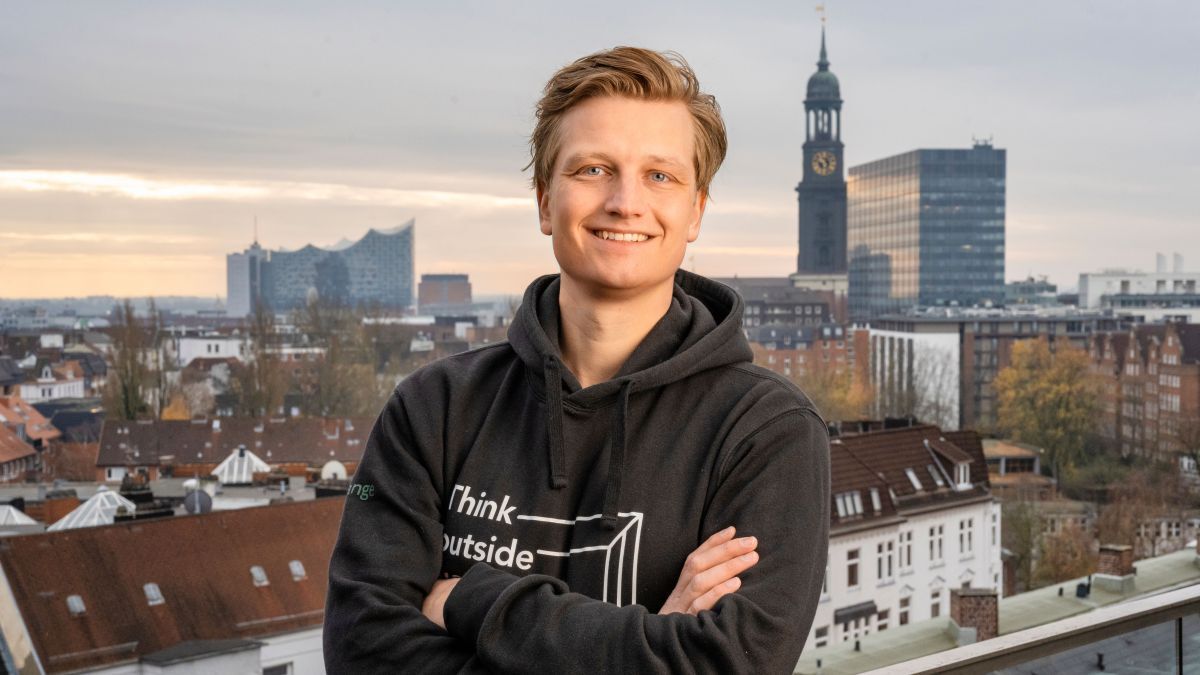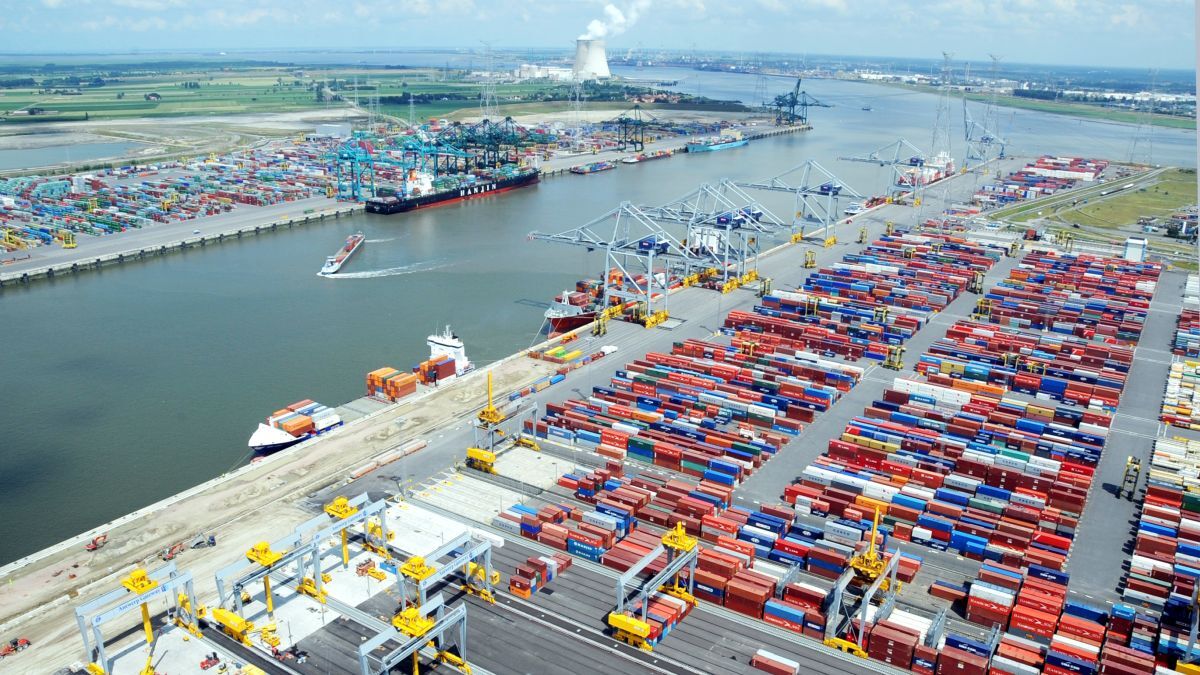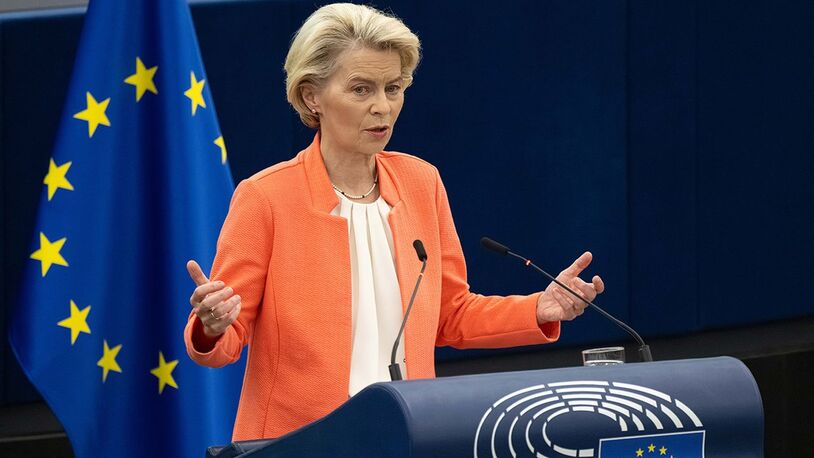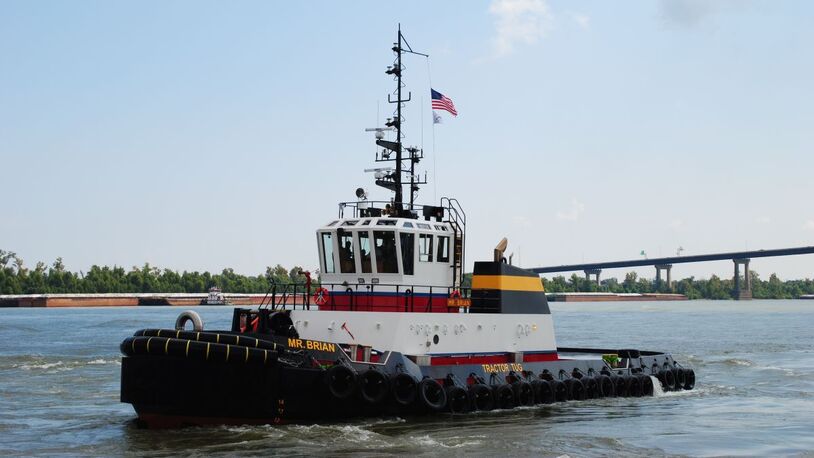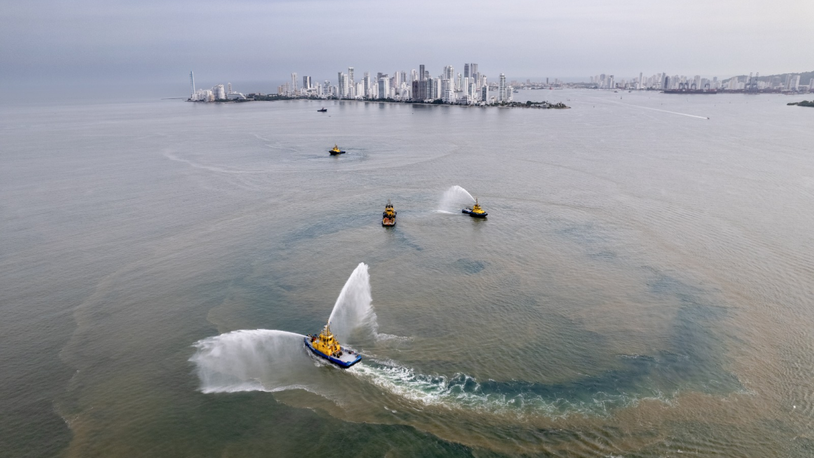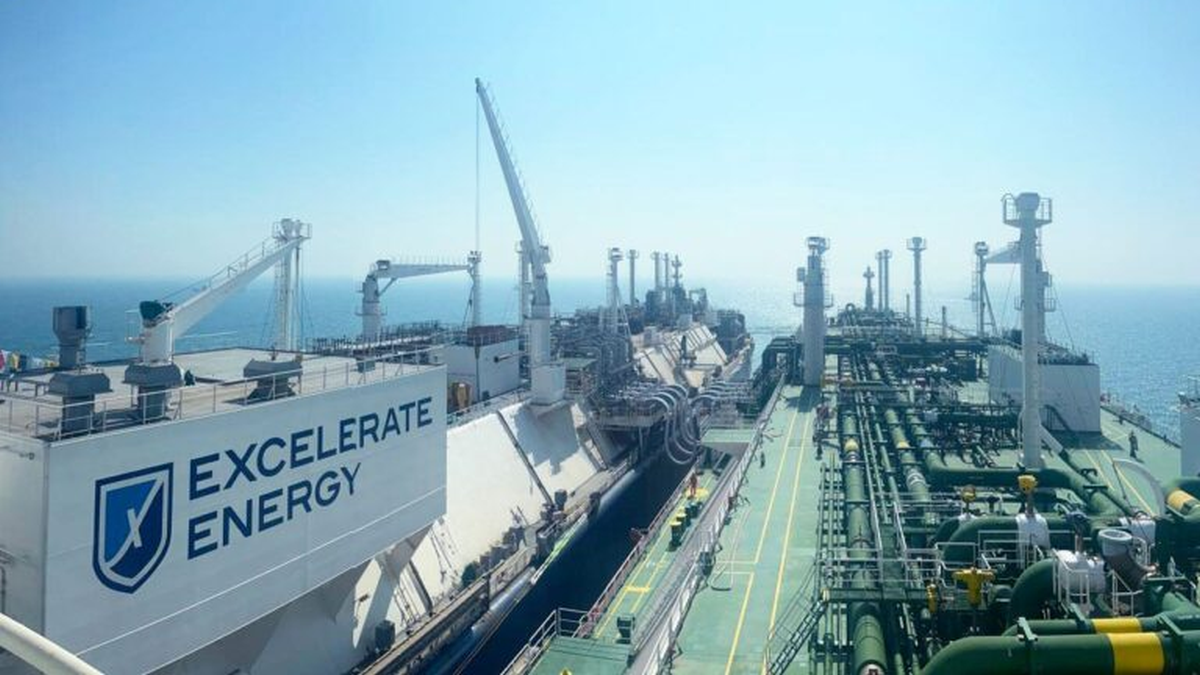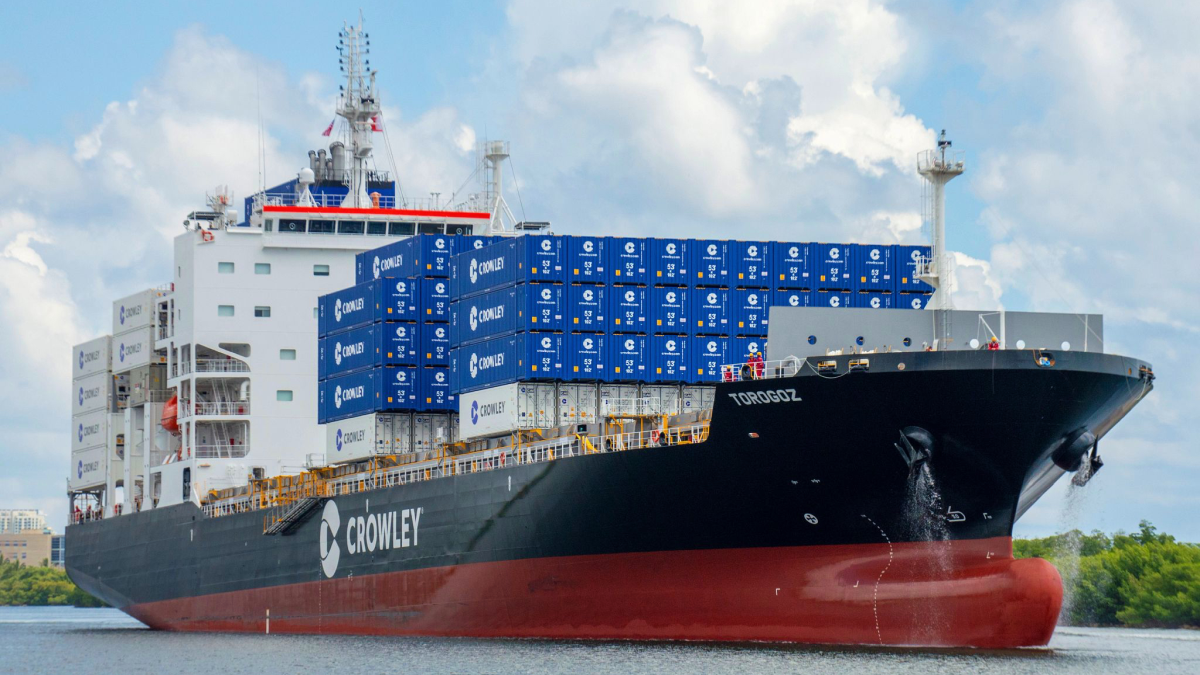Business Sectors
Events
Contents
Register to read more articles.
European ports battle ripple effect of China lockdowns
European ports face congestion challenges caused by China’s zero-Covid policy and the Ukraine-Russia war - but elsewhere are making inroads on decarbonisation initiatives
European ports are battling congestion and delays brought about by China’s zero-Covid policy and the Russia-Ukraine war.
Container xChange co-founder and chief executive Christian Roeloffs says, “The war has impacted Europe greatly. First, containers are stuck in the terminals waiting for transhipments to Russia and the result is a huge pileup.
“The second significant impact is on the China-Europe rail. The northern corridor is still open, but volumes are massively reduced due to uncertainty in the market. That has pushed cargo towards sea freight and even in some cases towards air freight. Low-value cargo has largely suffered because high-value cargo has been pushed to the ocean transport.”
‘Traffic jam’: China lockdowns
And moving to the lockdown in Chinese ports brought about by the country’s zero-Covid policy, he says, “It’s like in a traffic jam. Some people stepped on the brakes heavily and this will lead to a significant bulk up in demand for freight services which will be unleashed once the factories reopen. And whendemand is back, the carriers will again not have enough equipment on the ground because not enough equipment went into China during the port lockdowns and not enough vessels are available, so that will push up prices.”
He adds, “This will continue pushing the volatility in the market and the congestion situation on the transpacific will not significantly improve because it’s almost like a start-stop situation. It will just come back worse than it was, because the way you remove the traffic jam is not by stopping something violently and then hitting the accelerator again. It’s making sure the traffic flows at a certain speed.”
Dr Roeloffs says the impact of Covid lockdowns on key markets will have wider-reaching impacts leading to equipment scarcity in China and a hike up of rates.
Antwerp Port Authority vice president international relations and networks Luc Arnouts shines a light on how the pandemic, China port lockdowns and the Russia-Ukraine war have impacted ports in Europe.
Port of Antwerp has kept its container volumes on an even keel despite the challenges of the pandemic and global equipment shortages.
For 2021, Port of Antwerp saw volumes of just over 12M TEU, a small decline of 0.1% compared with 2020, but this is higher than its 2019 throughput of 11.8M TEU.
Mr Arnouts tells CST, “We are proud that in 2020, despite Covid, Antwerp was one of the few ports that could continue its growth pattern. In 2021, our volumes stabilised, and we lost market share which relates to the worldwide disruptions which hit the major ports.”
Highlighting the challenges created by the pandemic, Mr Arnouts says, “There was an unexpected strong rebound in container demand in mid-2020, we had to keep our volumes up, then this shortage of equipment and vessels on all different trade lanes happened, along with the impact of Covid-19 measures on labour.”
Labour shortages came about due to two factors, Mr Arnouts says, with less training available due to the physical limitations caused by the pandemic and because of the uncertainty created. Mr Arnouts explains, “We did not expect business to pick up and grow as much [in 2020] so this led to certain shortages on board, with an impact on business. We are happy to keep our volumes on the same level, but 2021 was a tough year in terms of port labour shortages.”
But Port of Antwerp has overcome this challenge, as its new programme to increase the number of dock labourers is working well, Mr Arnouts says.
A ripple effect
But there are still challenges from the fallout of Covid to port operations. “We now have lockdowns in Chinese ports caused by the zero-Covid policy. Shanghai port has recently been partially closed due to this. It causes a ripple effect - ships stay longer in China, and then more arrive at onward ports in the same timeframe so there is a lot of pressure on berth time windows in all terminals, creating congestion, and this disruption continues.”
He warns, “This is a serious challenge, and if China sticks to the zero-Covid policy, there will continue to be disruptions, and a ripple effect across ports.”
Ports and shipping lines are doing their best to mitigate the effects of the Covid shutdowns and gain back time lost in China, with Antwerp’s terminals using cut-off times, and charging surcharges for containers delivered too early.
The Russia-Ukraine war is adding to the issues created by Covid. Mr Arnouts says, “The Russia and Ukraine situation will create disruptions as shipping lines are not stopping at Russian ports, which will have an impact on reliability for the whole supply chain.”
He adds that a side effect of the Russia-Ukraine war is a truck driver shortage in Europe, as Ukrainian drivers are a strong element in this sector, but due to the war are less available.
“We expect pressure again for sufficient drivers to transport goods in Europe and an increase in rail transport.”
Ports participate in energy transition
Despite challenges, there are also opportunities for major ports and one of these is the maritime energy transition. Explaining Port of Antwerp’s strategies and focus here, Mr Arnouts says, “Hydrogen, methanol and ammonia are becoming more important and because of this, will become major import products. The greening of the economy creates opportunities. We want to deliver alternative energy to shipping lines. Carriers are investing in LNG, and Maersk in methanol.”
Antwerp already has an LNG station where barges are loaded, and its first hydrogen bank station opened last year and can deliver hydrogen to trucks and small ships. “We want to offer all different fuels to ships,” Mr Arnouts says.
Reflecting on the energy transition, plus the challenges of congestion and delays ports currently face, Mr Arnouts says, “We have to be resilient and more agile than ever before.”
Other European ports are also seeing opportunities within the maritime energy transition. Dutch Minister of Climate and Energy Rob Jetten received the first certificate for green hydrogen during a visit to North Sea Port in Terneuzen in April this year.
The Trading Platform HyXchange is an initiative of Gasunie and the Port of Rotterdam Authority, Port of Amsterdam, Groningen Seaports and North Sea Port (Vlissingen, Ghent, Terneuzen).
Trading in hydrogen will take place via the trading platform HyXchange, which will be set up for this purpose. The certificates are Guarantees of Origin, certifying the hydrogen has been generated from sustainable energy such as green electricity. Vertogas BV provides Guarantees of Origin for biogas and has been appointed by the Minister to develop the Guarantees of Origin for hydrogen. It is currently working on a certification system that provides for this new task.
This system will be tested over the next three months in a certificate pilot organised by HyXchange, with 16 participating market parties involved in green and low-carbon hydrogen. After this pilot, the final issue of Guarantees of Origin for hydrogen will start
And other port energy initiatives are taking place. Hamburg, Gdynia, Roenne, Rotterdam and Tallinn have joined an initiative aiming to define a template for the development of decarbonised shipping infrastructure that can be used in other regions.
Green corridors have been recognised as a key enabler for shipping’s transition, and a statement from the initial members says the work directly supports the Clydebank Declaration announced during COP26 in Glasgow.
Co-ordinating efforts, the Mærsk Mc-Kinney Møller Center for Zero Carbon Shipping says the project will take a phased approach beginning with a prefeasibility phase.
The prefeasibility phase would, according to a statement on the initiative, "identify the potential routes, vessel types and fuels to establish high-impact green corridors in the region".
Once the routes, vessels and fuels to be used are defined, participants will "assess the technical, regulatory and commercial feasibility of the shortlisted routes" before eventually establishing green corridors in northern Europe and the Baltic Sea.
The ports who have thus far signed on to this initiative are all located within Europe’s North Sea and Baltic regions. A statement from the initiative says the group will attract additional public and private sector participants.
During the UN’s COP26 meeting on climate change in 2021, a coalition of governments pledged to create half a dozen zero-emissions green shipping corridors by the mid-2020s, but participation by operators transiting the routes is voluntary.
The coalition of 20 countries including the US, the UK, France, Germany, Norway, Sweden, Japan, Australia, New Zealand and others say the green corridor designation and zero-emissions requirement does not apply to all vessels.
"For greater clarity, all vessels transiting a green corridor would not be required to be zero emissions or to participate in the partnerships," the COP 26: Clydebank Declaration for green shipping corridors policy paper published on the UK Government website says.
The mission statement for the Clydebank Declaration’s signatory states outlines a "collective aim" to establish at least six green shipping corridors that would be in place by the mid-2020s, with the potential for more routes to be established later.
Investments and transhipment
Elsewhere, Dunkerque-Port intends to double its container traffic by investing in the terminal and opening a new transhipment business.
France’s third-largest port by total throughput has already seen huge growth in the volume of containers due to its rising transhipment activity, with feeder ships transporting cargo to UK and Irish ports.
Container throughput at Terminal des Flandres in 2021 was 652,000, which was up 41% year-on-year.
Dunkerque-Port chief executive Maurice Georges expects this to rise to 750,000 TEU in 2022 and it could reach full terminal capacity within four years.
“We want to get to 1M TEU in the coming years, which is limited by the quay length at the terminal,” he says. “By 2027 we will complete the extension project for the terminal to double container capacity to 2M TEU.”
Mr Georges says the port and terminal operator has applied for approvals with authorities, financiers, partners and other stakeholders.
Terminal expansion will require investment in quayside and wharf infrastructure, logistics, marine services and dock workers.
“We have applied for approvals for all this… there are huge challenges to come,” says Mr Georges.
The increase in container traffic at Dunkerque-Port is partly due to it becoming the top transhipment port in France, with Containerships introducing new services to and from the English ports of Liverpool and Bristol.
This service makes it possible to process 600 TEU per week, coming mainly from Asia via the FAL 1 (French Asia Line) service of CMA CGM, with 300 TEU from British ports in Asia and 75 TEU volumes heading to continental Europe.
The main user of the terminal is CMA CGM, which managed the first LNG bunkering to a container ship in Dunkerque in April 2021.
MOL-operated 18,600-m3 LNG bunkering vessel Gas Agility, the world’s largest at that time, refuelled CMA CGM Jacques Saadé at the Flanders terminal. Dunkerque LNG terminal is developing a complete LNG supply chain in conjunction with Dunkerque-Port.
It was initially designed to host conventional LNG carriers, from 65,000 m3 to 267,000 m3. The terminal jetty was adapted in June 2020 to offer the new services for loading bunker vessels and small LNG carriers.
Dunkerque LNG partners with Total Marine Fuels, MOL and CMA CGM for these operations.
Another new service at the Dunkerque-Port is a roro route to Rosslare, Ireland by DFDS. This started 2 January 2021 when Optima Seaways left the Irish port for Dunkerque.
The route offers exporters and transport companies a direct journey between Ireland and the European Union, by-passing the UK and the alternative land bridge, with a sailing time of just under 24 hours.
Riviera Maritime Media will provide free technical and operational webinars in 2022. Sign up to attend on our events page
Related to this Story
Events
Offshore Support Journal Conference, Americas 2025
LNG Shipping & Terminals Conference 2025
Vessel Optimisation Webinar Week
© 2024 Riviera Maritime Media Ltd.


